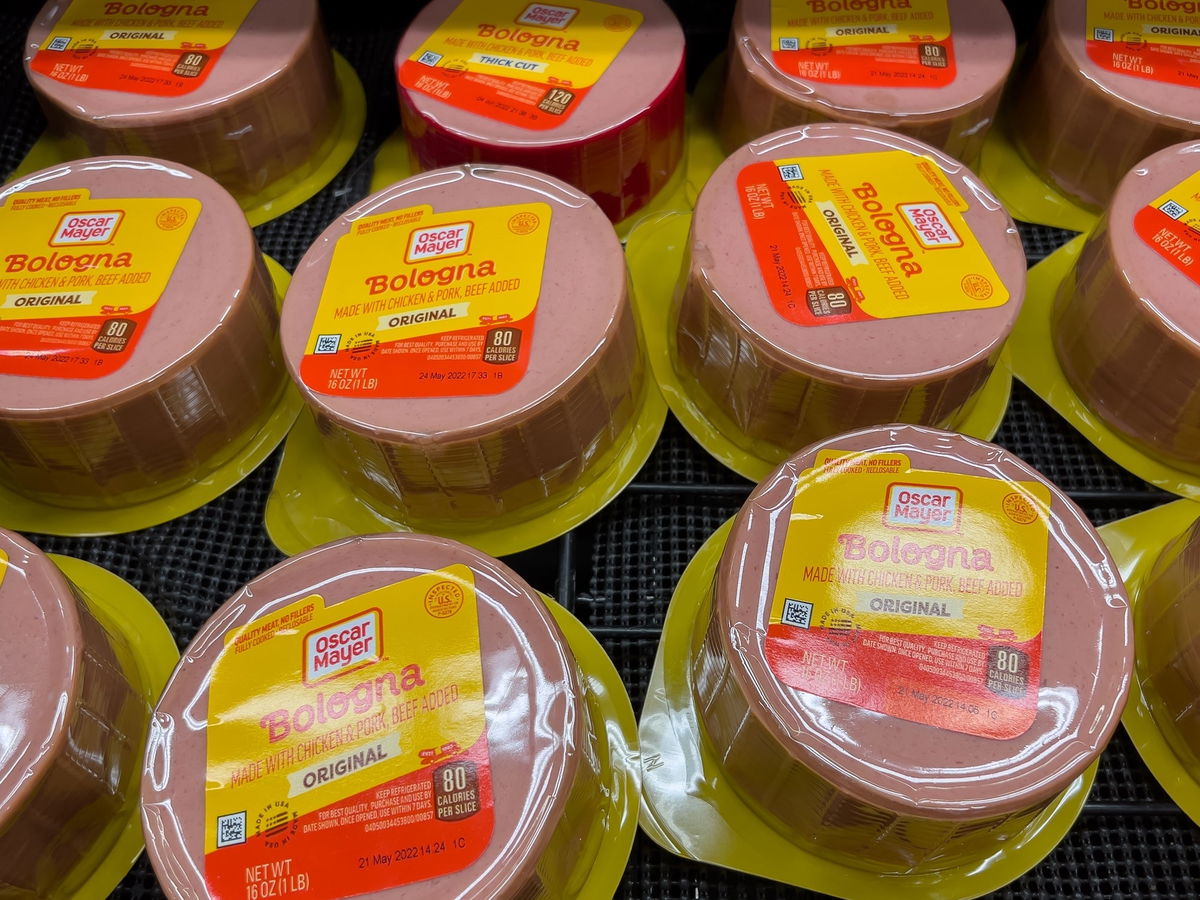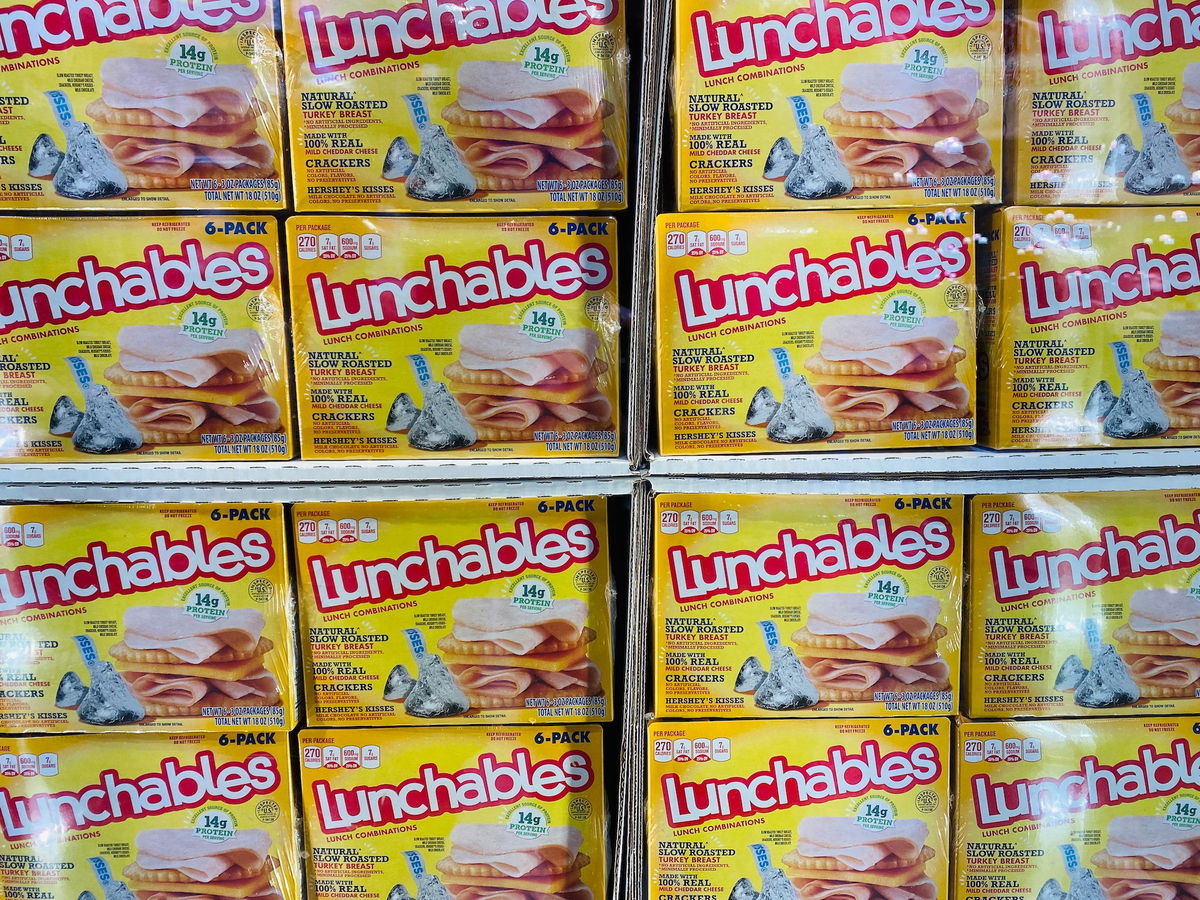One of Kraft Heinz’s most profitable brands, Lunchables, is signing a deal with grades K-12 schools across the country — potentially launching Big Cheese, Ham and Crackers into unknown heights.
Carlos Abrams-Rivera, Kraft Heinz executive vice president, announced the deal at the annual Consumer Analyst Group of New York (CAGNY) meeting on Feb. 21. Two types of Lunchables with “improved nutrition” will be served in grades K-12 schools as soon as this fall.
A Kraft-Heinz spokesperson declined to provide more details. The company will release more information about this program in the next month.
The effort is likely intriguing to any of the folks who have consumed the billions of Lunchables packages sold by Kraft Heinz since they were introduced in 1988. I — or more accurately, my parents — purchased untold units of Lunchables because I was for some reason obsessed with eating the pepperoni pizza variety through much of my childhood. My organs have come out mostly unscathed.
For the uninitiated, here is what a Lunchables consists of:
- Some sort of main dish that you make yourself, like stacking rectangles of ham and cheese on a circular cracker or squeezing a red pizza sauce on a disc of bread and adding cheese and pepperoni.
- A drink, like bottled water, Capri-Sun, or a mysterious fizzy drink called “Cola.”
- Dessert, like a wee Crunch bar.
Here is my ode to Lunchables, the most MBA-friendly product to ever exist, with a significant footnote for the nutritionally suspicious element within. Ultimately, as schools become more strapped for cash, we will see more of these deals come about — and it’s a spooky indicator for our country’s health outlook.
The incredible business of Lunchables
What I did not admire as a child eating Maxed Out Deep Dish Pizza Lunchables is the logistics and margin-slashing wonder within. (In addition to not forcing me to eat kale salad for lunch every day as a child, my parents did not buy me a subscription to Harvard Business Review.) But fear not! I learned a bit more about the economics behind Lunchables when I read “Salt Sugar Fat: How the Food Giants Hooked Us” by investigative reporter Michael Moss.
As Moss wrote about in the 2013 book, a team of Oscar Mayer executives created Lunchables in part as a way to integrate the processed ham, bologna and pepperoni that were falling out of popularity with suddenly health-conscious Americans.

Through the past few decades, a series of mergers gave Oscar Mayer a slew of sister brands to also include in its Lunchables — like Ritz crackers, Kraft processed cheese and Capri-Sun from Philip Morris. That helped make the meals a win across the entire company, Moss wrote.
Another glory attained by the Lunchables was its supply chain superiority. Automated factory lines can quickly slice and place the components on their small trays. After they’re produced, the food can stay edible for months. Unfortunately, this meant Lunchables could never include fresh veggies and fruits.
“The inventors of the Lunchables wanted to include carrots and celery and sliced apples, knowing that those were better things to give kids than a candy bar,” Moss told FreightWaves. “But they immediately kind of ran into the problem that this product, like most processed products, had to sit in the warehouse and then sit on the truck, and then sit in the grocery store, and then sit in someone’s fridge for days and weeks, if not months. The inventors could not figure out how to put something fresh into the transport system.”
Decades later, the food industry still can’t figure out how to do that.
“When you talk to people who are trying to change the food system for the better … the freight problem is the biggest one they’re facing in trying to figure out how to deliver freshness in a way that’s still affordable,” Moss said.
Lunchables taste gross, but that’s not the point
Consumers have become used to the idea that you could buy an actual meal from the grocery store and eat it right away. Sure, potato chips and pretzels have been around for a while as snacks, along with canned soups for a real meal, but the concept that you could pick up a product that has your drink, main food and even a dessert — no microwave or can opener necessary — was revolutionary in the late 1980s.
“Lunchables was really kind of the first item in the grocery store that brought the fast-food industry into the supermarket,” Moss said. “You really didn’t have stuff in the supermarket that you could just rip open, walk out of the supermarket and eat walking down the street if you wanted to.” (Note: No one should ever do that.)
Today, there are 39 Lunchables varieties, ranging from hot dogs to nachos to pizza and “chicken dunks.” The thing about Lunchables is that they’re … kind of disgusting. While writing this article, I have had specific flashbacks to how some of these things tasted and found my face crumpled up in disgust. (Moss wrote in his book that adults disliked Lunchables in taste tests.)
However, this really does not matter for kids. Moss said yet another genius aspect of Lunchables is its marketing. The kits give kids a rare bit of autonomy to make their own meal. And, other kids will be envious of their bright yellow box. And, parents who feel bad that they can’t make their kids lunch themselves may placate themselves by giving them Lunchables.
“Lunchables is all about empowering kids and driving creativity and fun,” Abrams-Rivera said at the CAGNY conference.
Kraft Heinz’s school partnership will only make Lunchables stronger
The marketing and logistics might of Lunchables only grows with this announced school integration. You may wonder how much more the product could flourish. Abrams-Rivera said Lunchables saw a 21% unit uptick during its back-to-school season in 2022 compared to the year prior. Peak Lunchables is yet to be realized!
So that the product can be sold in schools, Kraft Heinz will make special, nutritionally boosted Lunchables. School meals have to meet certain targets pertaining to sodium, whole grains and a host of other components. Crafting new formulations will likely cut out some of the profit margin for Kraft Heinz.
But the opportunity to be in grades K-12 schools and directly selling branded products to students is worth it. Arizona State University professor Kevin Dooley said children will likely be eating Lunchables for a few years in school, but they could be buying Kraft Heinz for the rest of their lives. (They’ll likely even buy Lunchables for their kids when they grow up, too.)

“If I were in their shoes, I’d be more excited about getting additional exposure of my brand to youth and the potential impact that would have on my brand longevity,” Dooley told FreightWaves, noting that simply breaking even in this school venture would still be a massive win for Kraft Heinz.
It’s a great time for the kings and queens of packaged food to get into selling directly to schools, said Oliver Wyman retail and consumer goods analyst Bobby Gibbs. Inflation means that, even as companies have boosted profits, they’ve seen volume decline. Working with schools could mean volume remains rigorous.
Look, I’ll admit it: Lunchables are not the healthiest choice
School lunch nutrition experts aren’t exactly thrilled about Lunchables being served to grades K-12 students. But it’s not quite for the reason you’d think.
The Lunchables served at school will meet federal nutrition standards, so they will likely have higher whole grain content and less sodium and fat. Domino’s, Kellogg’s Pop-Tarts and a host of other brands all have “copycat foods” for the K-12 game.
However, Lunchables will still be available in grocery stores in their full, fatty, salty, white floury form. For that reason, copycat foods are troublesome, according to Meghan Maroney, campaign manager of federal child nutrition programs at the Center for Science in the Public Interest.
“It both undermines the school nutrition program and it sends conflicting messages to families,” Maroney told FreightWaves. “A parent may think, ‘Oh, Lunchables are allowed to be served at school and they need these strong standards, so Lunchables must be healthy.’ The next time they go to the store, they buy Lunchables, but they’re actually totally different.”
Then, kids compare the healthier versions at school to the grocery store versions … and will likely find the full-fat, full-salt, full-everything kind tastier.
“Really, everyone loses — except maybe the manufacturer who is developing brand loyalty one way or the other,” Maroney said.
Low-income kids are at the most risk
Unfortunately, the school districts that seem most likely to offer Lunchables will be ones already cash-strapped. And the children who struggle most with food access will be more likely to be eating these meals.
In Anchorage, Alaska, some schools aren’t able to serve hot meals to students. Declining enrollment has meant the school district can’t maintain as many lunch rooms or school kitchens, so they’re serving Lunchables with milk and a fruit cup instead.
The principal at one of these Anchorage elementary schools told a local news channel in February that her low-income students in particular have struggled with the lack of hot meal availability. About 1 in 8 American children do not have “consistent access to adequate food,” according to the School Nutrition Association, which makes providing decent school meals crucial.
Unfortunately, we can’t simply nix Lunchables, Domino’s pizza and other processed foods in school cafeterias. Such economic and hiring challenges are hard to overcome — and kids still need to eat.
Pediatric nutrition expert Juliana Cohen, an adjunct associate professor at Harvard University and associate professor at Merrimack College, said there’s a way for school districts and parents to cope with Lunchables. For example, Cohen said districts can serve a fruit or vegetable with these packaged meals.
It seems we will have to accept the ever-growing power of Lunchables — but maybe request an apple on the side.
What do you think of Peak Lunchables? Do you have fond memories eating them? Which ones were your favorite? Please email all opinions to rpremack@www.freightwaves.com and don’t forget to subscribe to MODES.
